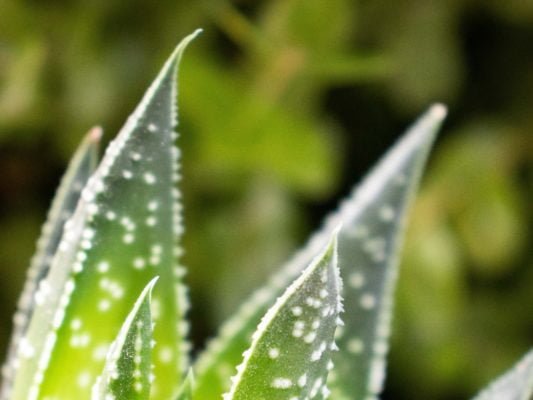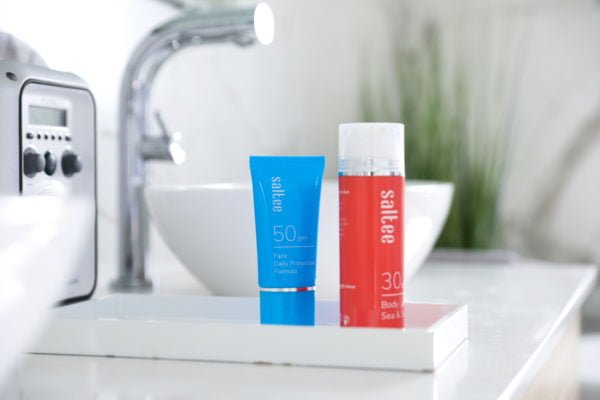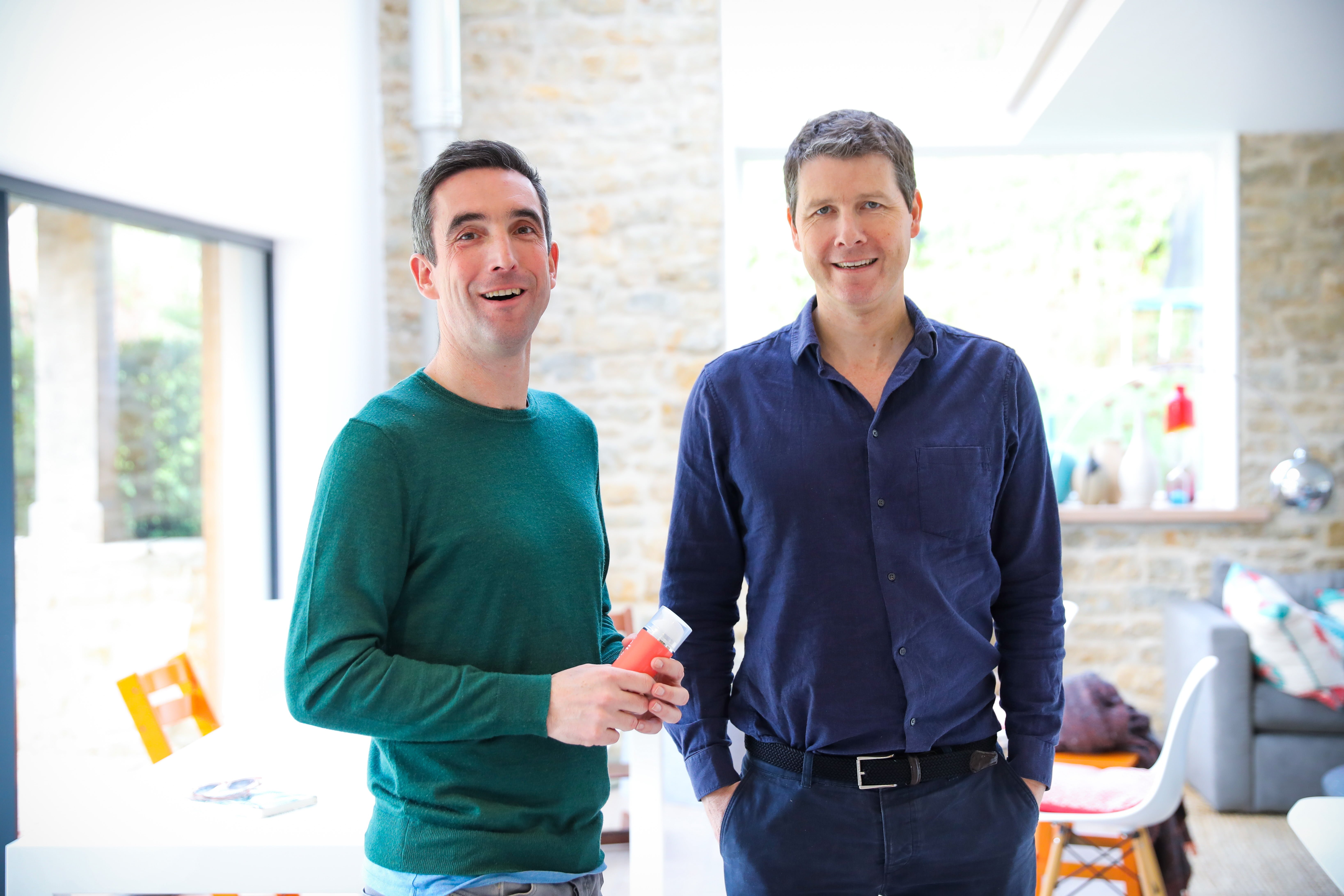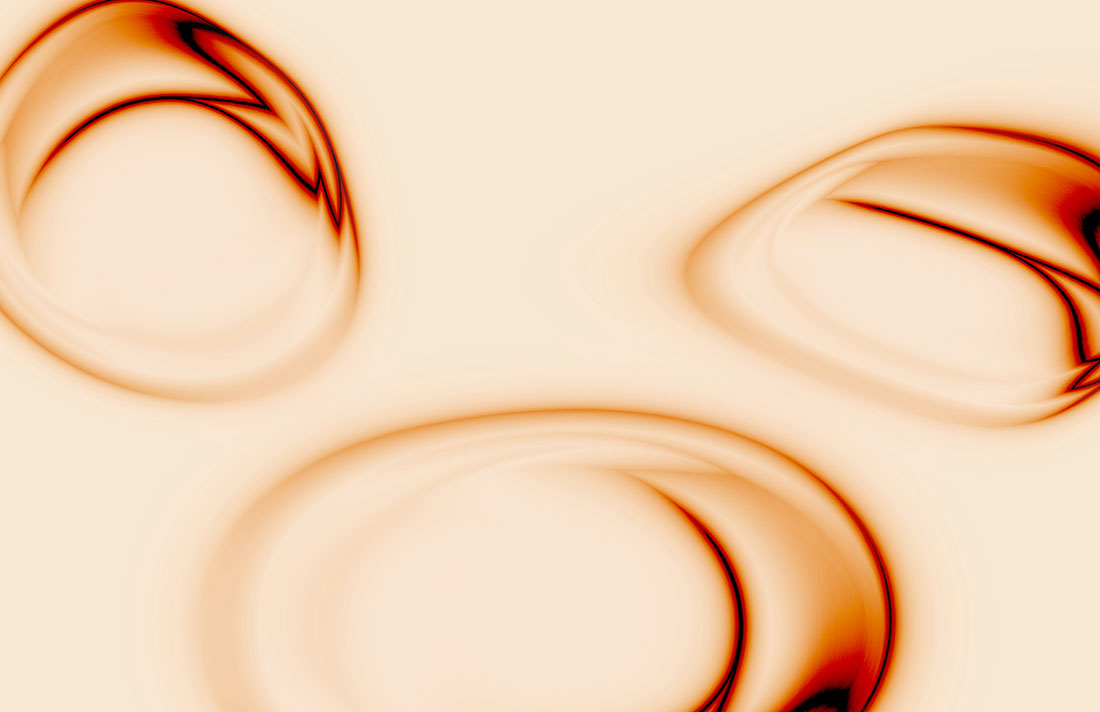An interview with Saltee founders Sam and Patrick
True sustainability can be hard to find in a suncream however, here at Saltee we truly understand the importance of environmentally friendly suncare, especially if you plan to take a dip in the ocean. Sustainability refers to a safer, non-toxic formula and responsibly sourced packaging. We’ve spoken to founders Sam Richardson and Patrick McGuirk and here’s what they’ve got to say:
What is the Saltee philosophy on sustainability?
Patrick: Saltee is a business based on sustainable principles – we don’t shout about it because we see good sustainable practice as a given in any modern consumer goods business.
The genesis for establishing a natural and positive consumer business came from a recycling business that we established in 2011. Bringing our experience in consumer goods, retail and complex supply chains the commitment of Saltee is to be a fabulous product but also one that has a positive impact on the wider world.
What about the impact on the oceans? Is Saltee “reef safe” given the ruling in Hawaii to ban some suncreams?
Sam: Oxybenzone has been identified as an ingredient in some suncreams that can harm coral reefs. It has been shown to exacerbate and accelerate the devastating coral bleaching. This is destroying much of the fragile coral reef ecosystems around the world. This ingredient was the primary focus of a recent ban on certain suncreams by the authorities in Hawaii. Saltee does not contain Oxybenzone and none of our products ever will. More about Oxybenzone
Patrick: Octinoxate has also raised some concerns as an ingredient that may be harmful to some ocean life. Saltee body SPF contains a tiny amount of Octinoxate and we are therefore committed to re-forumaltion process that will ensure that the next generation of Saltee products will be 100% reef safe – we look forward to sharing these with the Saltee Tribe in the future. More about Octinoaxate
What about nano ingredients?
Sam: Saltee does not contain any nano particles. Nano sized particles: zinc and titanium oxide nano particles can be consumed or absorbed by marine life and also disrupt the growth of coral reefs. Nanoparticles (ultrafine particles) smaller than 35 nanometres are also potentially damaging to humans – including those of zinc oxide and titanium dioxide found in mineral sunscreens – as they may enter the bloodstream and cause allergic reactions. Saltee prefers to stick to non-nano ingredients.

You won’t find any nano particles in our products as aloe vera is the main ingredient in Saltee products
Are your Saltee products safe for sensitive skin?
Patrick: Yes, the full Saltee collection is suitable for sensitive skin. All Saltee products are independently patch tested by a third-party laboratory to verify that they are suitable ‘for sensitive skin’. We advise that if you have particularly reactive skin its always best to test a small amount of Saltee to check that it feels as great on your skin as it has on other members of the Saltee Tribe.
Are your products cruelty-free?
Patrick: Yes, Saltee is cruelty free. None of our products have, or ever will be, tested on animals. We test on humans as that’s where Saltee is used.
Are your products vegan-friendly?
Sam: Yes, all of our products are suitable for vegans.
What thinking have you put into developing your products and packaging?
Sam: Our guiding principles on product development have been to ensure Vegan and vegan-friendly ingredients are used in every product in our collection. Discover more about our vegan-friendly products
-Cruelty free ingredients and raw material
-Organic and natural core ingredients in our packaging and suncreams
-Avoid palm oil; always
-Use thoughtful zero-waste packaging for environmentally friendly suncare

Only Vegan and vegan-friendly ingredients are used in every product in the Saltee collection
Tell us more about your history of working in sustainability?
Patrick: We first collaborated when working to establish the UK’s largest plastic recycling business. Continuum Recycling was established in 2012 to recycle plastic bottles and ensure a second life for the bottles we recycle in our green home recycling bins. I was a Director at Coca-Cola and determined to establish a meaningful impact from the company’s 2012 Olympic sponsorship; whilst Sam was a Non-Executive Director at Eco-Plastics with broader experience investing in green technologies. The two shaped the £125 million business and we went on to be Board Directors as the Lincolnshire factory produced 25,000 tonnes of recycled PET each year.
What does all this mean for the Saltee collection?
Sam: Saltee packaging is made to be recycled which supports our goal to make Saltee a zero-waste brand. Saltee is environmentally friendly suncare that contains only clean ingredients that do not irritate the skin, no parabens, silicones or SLS.
Are ethical standards in you supply chain important?
Sam: Our judgement at Saltee is that ethical standards in our Supply chain means:
-Fairtrade products
-Organic and natural ingredients wherever possible
-Cruelty-free formulations produced without testing on animals
-Clear sustainability standards
-Limited environmental impact
-Fair workers’ rights, and clear and just supply chain management
In creating the Saltee collection we have worked to these principles in our whole supply chain.
Indeed, we have registered on the industry leading SEDEX programme that reviews and audits the standards of consumer businesses. Ethical as well as sustainable underpins the Saltee business.
Remind us of the purpose of the products you produce?
Patrick: The purpose of all SPFs/suncare is to block and/or absorb UV rays through a combination of physical and chemical particles. The ingredients within Saltee work by reacting with radiation before it penetrates the skin, absorbing the rays and releasing the energy as heat.
-In that sunlight is composed of packets of energy called photons, it’s particularly the sun’s ultraviolet (UV) light photons that can cause skin damage.
-UVA light penetrates deeper into the skin than UVB, destroying a structural protein called collagen. As collagen degrades, our skin loses its elasticity and smoothness, leading to wrinkles. UVA is responsible for many of the visible signs of aging, while UVB light is considered the primary source of sunburn. Think “A” for aging and “B” for burning.
–DNA itself can absorb both UVA and UVB rays, causing mutations which, if unrepaired, can lead to non-melanoma (basal cell carcinoma, squamous cell carcinoma) or melanoma skin cancers. Other skin molecules pass absorbed UV energy on to those highly reactive ROS and free radicals.
The resulting oxidative stress can overload the skin’s built-in antioxidant network and cause cellular damage. ROS can react with DNA, forming mutations, and with collagen, leading to wrinkles. They can also interrupt cell signaling pathways and gene expression.
-The end result of all of these photoreactions is photodamage that accumulates over the course of a lifetime from repeated exposure.
So, in conclusion it is for these fundamental reasons that the Saltee collection has been created. To protect in a sustainable way with environmentally friendly suncare but also with a product that you want to apply every day, when at home and when on holiday.









